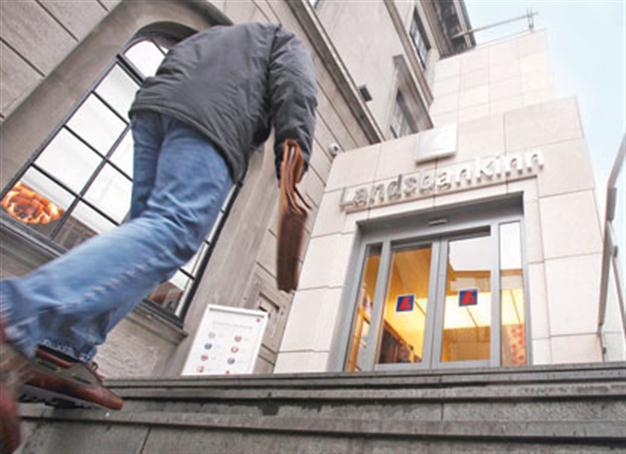
A customer walks into the main branch of Landsbankinn Bank in downtown Reykjavik in this March 5, 2010 file photo. Iceland’s financial system faced a near-collapse in 2008. REUTERS photo
hree years after Iceland’s banks collapsed, its economy is recovering, proof that governments should let failing lenders go bust and protect taxpayers, according to analysts.
The North Atlantic island saw its three biggest banks go belly-up in October 2008 as its overstretched financial sector collapsed under the weight of the global crisis sparked by the crash Lehman Brothers.
The banks became insolvent within a matter of weeks and Reykjavik was forced to let them fail and seek a $2.25 billion bailout from the International Monetary Fund (IMF).
After three years of harsh austerity measures, the country’s economy is now showing signs of health despite the current financial turmoil that has Greece verging on default and other eurozone states under pressure.
Iceland’s banking sector had assets worth 11 times the country’s total gross domestic product (GDP) before the crisis hit.
“The lesson that could be learned from Iceland’s way of handling its crisis is that it is important to shield taxpayers and government finances from bearing the cost of a financial crisis to the extent possible,” Islandsbanki analyst Jon Bjarki Bentsson told Agence France-Presse. “Even if our way of dealing with the crisis was not by choice ... this has turned out relatively well for us.”
American economist Paul Krugman echoed Bentsson. “Where everyone else bailed out the bankers and made the public pay the price, Iceland let the banks go bust and actually expanded its social safety net,” he wrote in a recent commentary in the New York Times. “Where everyone else was fixated on trying to placate international investors, Iceland imposed temporary controls on the movement of capital to give itself room to maneuver.”
Benefits of a national currency
During a visit to Reykjavik last week, Krugman also said Iceland has the krona to thank for its recovery, warning against the notion that adopting the euro can protect against economic imbalances. “Iceland’s economic rebound shows the advantages of being outside the euro,” he said.
Iceland’s example cannot be directly compared to the dramatic problems currently seen in Greece or Italy, however.
“The big difference between Greece, Italy, etc. today and Iceland back in 2008 is that the latter was a banking crisis caused by the collapse of an oversized banking sector while the former is the result of a sovereign debt crisis that has spilled over into the European banking sector,” Bentsson said. “In Iceland, the government was actually in a sound position debt-wise before the crisis.”
Iceland’s former prime minister Geir Haarde, in power during the 2008 meltdown, insisted his government did the right thing early on by letting the banks fail and making creditors carry the losses.
“We saved the country from going bankrupt,” Haarde, 68, told AFP in an interview in July. “That is evident if you look at our situation now and you compare it to Ireland or Greece ... We did not guarantee the external debts of the banking system.”
Iceland implemented strict austerity measures and is now reaping the fruits of its efforts. So much so that its central bank on Wednesday raised its key interest rate by a quarter point to 4.75 percent, in sharp contrast to most other developed countries which have cut their borrowing costs amid the current crisis.